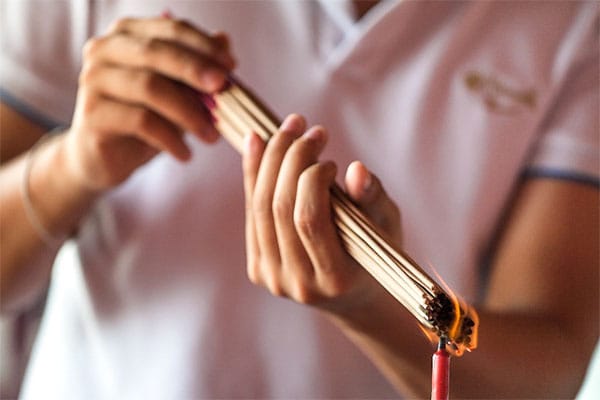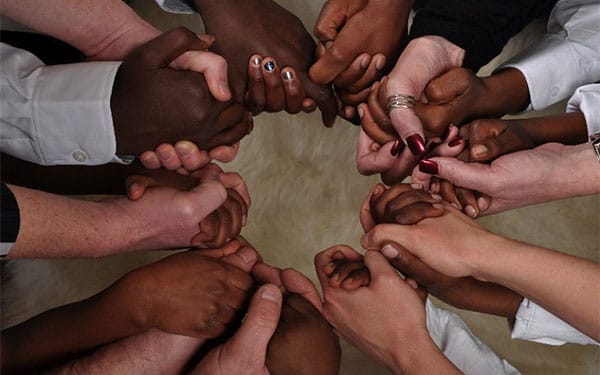Rituals have to be big, elaborate, time-consuming affairs with lots of tools, right? Though many faith traditions have complex rituals deeply rooted in history and practice, rituals are not necessarily complex. In fact, some of the most successful rituals are also likely to be some of the simplest.
What Exactly Is a Ritual?
Everyone has their own idea about what a ritual actually is. In a way, a ritual is simply a way to pay close attention to an important moment. Rites of passage, coming of age celebrations, marriages, divorces and separations, birth celebrations, and funeral observances all allow participants to pay close attention to an important moment. Other rituals mark the occurrence of a significant date or time of year, such as the Advent season or an autumnal full moon. Frequently, spiritually significant symbols and stories play a key role in ritual events. This invests ritual events with religious as well as cultural significance. If you have a specific event that you are planning and require a minister, you might be pleased to know that the Find a Minister tool on Get Ordained™ is available for you to look for someone that can assist in your particular ceremony.
Some rituals are especially designed to achieve a particular outcome, such as the solemnizing of a relationship within a religious or social community. The ritual outline provided here is well-suited to these outcome-oriented observances. However, rituals taking place on a community level are often the most complex in terms of organization and planning. Rituals done for one person or for a small group are much easier to plan and execute.
A Closer Look at Outcome-Oriented Ritual

Outcome-oriented ritual is different from observance-oriented ritual because something is felt to have changed during the course of the ritual or during the general time in which the ritual is taking place. For this reason, it is helpful to think of outcome-oriented ritual as having a narrative structure. A beginning, middle, and end can be clearly identified. The middle portion can be further identified with stages that might include building towards a specific climax and then reaching that climax before reaching a resolution at the final stage.
The convenient narrative model makes sacred stories, fairy tales, cultural narratives, and myths a natural fit for a number of rituals. If you are having trouble planning a ritual, consider looking for myths, fairy tales, and sacred stories that speak to the specific concern you are having and then follow the high points of the story's structure.
A Simple Ritual Framework

Here is a simple ritual framework that will suit many different needs. It can be applied to both outcome-oriented and observance-oriented ritual, though it is best suited to rituals with a particular outcome or result in mind.
- Identify the purpose of the ritual. Take a few minutes to explain its purpose and spiritual significance.
- Honor sacred principles and ask their blessing, if desired. A formal or informal prayer can be offered at this point. This is a good time to ask the blessing of sacred principles or beings particular to the people participating.
- Identify the way things are now. A prayer, verse, symbol, item, or series of actions can explain or point out the initial circumstances that the ritual is helping to symbolically propel forward.
- Celebrate or exclaim the transformation that you wish to occur. Additional words, actions, symbols, or items can be used to illustrate how the initial circumstances are going to transform.
- Clearly outline what the outcome of the transformation will be. The resolution should be made obvious through the use of declarations, actions, the adoption of new symbols, or the recitation of a celebratory prayer.
- The ritual is brought to a close. The sacred principles called on in step two are thanked and blessings are sought. A peaceful, content, and uplifting conclusion is achieved.
This might look a little abstract, so let us take a look at how this model might apply in the real world.
A Simple House Blessing Ritual
House blessings are very old rituals meant to firmly identify a living space with a family or a new couple. Such rituals are used to spiritually transform a space from a house to a home. It can be done before all the boxes and furniture arrives or just after.
To prepare, you might speak with the household to find out if they have any particular concerns that they might want addressed in the ritual. This might include their hopes for a fresh start or their worries about living in a new location. If they happen to have particular spiritual beliefs, learning a few things about that will be useful, as well. This information will help you craft the ritual in a meaningful way. Example statements are used here; prayers, explanations, and other words should be tailored to address the particular concerns of the household.
This example ritual requires preparing a few scoops of earth in an attractive dish. Something that will fit comfortably in your hands is best. You will also need a broom and a bouquet of fresh flowers; ideally, the broom should be new and the flowers something that would be found growing in the area.
First, gather all members of the household together. Once everyone is gathered, briefly explain that this house blessing will help them feel more comfortable and at home in a new space. Next, ask the blessing of land on this new household. Begin by using the broom the symbolically sweep old energies and associations out of the house. Explain what you are doing and let each member of the household participate. Just a few scuffs of the broom across the floor of each room will suffice; it is not necessary to physically clean the house. This stage would be identified with step three in the outline above.

Next, bring the bowl of local earth through each room. Let each member of the household help by carrying the bowl through portions of the home. Once this is done, everyone can step outside to a place near the front door to return the earth back to the ground. The blessings of the local land have been spread throughout the home and the physical earth itself has been handled by the household members. This stage corresponds to step four.
Finally, place the fresh flowers in a vase and put the vase in the kitchen, living room, hallway, or anywhere else all members of the family will see it. This step corresponds to step five and helps signify that something very specifically has changed. The household is now firmly situated into the spiritual landscape of their new home. A final blessing or prayer can be said.
Rituals for Everyone
As you gain practice doing rituals, you will no doubt discover other outlines that work best for the people you serve. Getting good at doing simple rituals will help you approach more complex ones with confidence.

